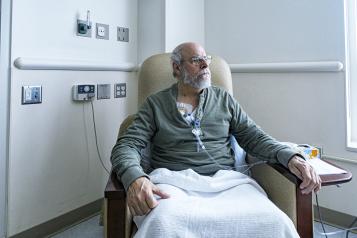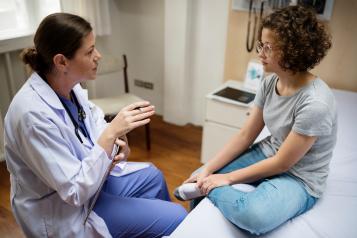Using women's voices to shape NHS plans to reduce cervical cancer

In September 2024 we published new research findings on women’s previous experiences of cervical screening and reasons for their hesitancy to go for future checks. We used these to make more than a dozen recommendations, many of which now feature in NHS England’s new action plan for eliminating cervical cancer by 2040, published on 28 March 2025.
Why did we carry out the research?
In November 2023, NHS England (NHSE) announced a new goal to eliminate cervical cancer in England by 2040. To help inform its upcoming strategy for this goal, we sought to understand why uptake of cervical screening through the national screening programme has been persistently decreasing, leaving the proportion of women screened at its lowest levels since 2014. Rates have been particularly low among younger women aged 25-49.
What did we find?
After commissioning a polling agency to question more than 2,400 women who were hesitant to attend a screening appointment and commissioning 10 local Healthwatch to speak to 30 younger, disabled or minority ethic women, we found:
- Physical discomfort, embarrassment and not being currently sexually active, were the main reasons women said they were hesitant about going for screening.
- Women wanted clearer information about Human Papillomavirus (HPV) – the main cause of cervical cancer, and signs of which are looked for during screening checks.
- Some women didn't receive accessible or translated information to understand screening invitations and therefore couldn’t make an informed decision about attending.
- 81% of women who'd been screened previously said staff treated them with respect but only 33% had felt able to ask for practical changes to make them feel more comfortable.
- 73% of women would support self-screening at home if it was available on the NHS.
- Other factors affecting uptake included cultural influence, problems with booking and lack of reasonable adjustment for disabled women.
What action did we take?
We published our findings, calling for a more personalised approach to cervical screening and urging the government and NHSE to introduce self-screening to boost uptake.
We shared our findings with NHSE, royal colleges, ministers and MPs. Our chief executive was interviewed about our calls on Woman’s Hour on BBC Radio 4 and also featured in other media.
What does NHSE’s new action plan say?
NHSE’s new plan says success relies on two key factors – increasing HPV vaccination rates of teenagers and increasing the number of younger women taking up cervical screening.
By 2030, NHSE wants:
- 90% of girls fully vaccinated with the HPV vaccine by the age of 15
- 70% of women screened for HPV by the age of 35 and again by the age of 45
- 90% of women with ‘precancer’ signs receive treatment
- 90% of women with invasive cancer manager
By 2040, NHSE wants cervical cancer incidence to a rate below 4 per 100,000 (currently 5 per 100k).
Which of our recommendations has NHSE adopted?
To achieve the new targets, NHSE says it needs to take steps to improve access and awareness, tackle inequalities, use digital technology and have the right workforce in place. Below we map five key Healthwatch recommendations adopted by NHSE.
Introduce HPV self-screening free on the NHS
Women told us self-screening would improve privacy, reduce discomfort, be more convenient and help lessen the impact of past trauma,
NHSE action plan has committed to introducing self-sampling as an option for people who do not currently attend screening in early 2026, subject to agreement from the National Screening Committee. This is to try and encourage people who would not otherwise have come forward for screening.
NHS should provide clear and consistent information about HPV
This information would include how HPV is caught, who can catch it, how long it stays in your body and why screening is still needed if you’ve had the vaccine.
NHS action plan committed to raising awareness of HPV and screening through a new national cervical cancer elimination campaign.
NHS needs to fund a review of their current patient materials.
It is essential the accessibility of invitation letters are tested with people from diverse communities across the country to ensure they are easily understood.
NHS action plan committed to reviewing their materials and working with faith leaders and partners to ensure materials are culturally appropriate.
NHS needs to enable women to receive screening invites and book screening appointments via the NHS app
This would help avoid busy, main GP surgery lines to book, but we also called for appointment letters by post to remain for people who don’t use the App. The NHS action plan committed to offering screening invites through the app in 2025 but to retain letters to connect with people who are digitally excluded
Providers need to ensure staff receive sufficient training
It is essential staff are able to deliver trauma informed care and screening for people with disabilities.
What further action are we taking?
We have contributed key messages about personalised solutions in a new report Fixing the System: Reducing Women's Reproductive Inequalities, published by the All Party Parliamentary Group on Sexual and Reproductive Health in March 2025.
We have also contributed to a new internal consensus statement on cervical cancer that will be published soon.
Want to read more about our calls for change on cancer care?
Our latest policy position highlights what people have been telling us, and what changes we are calling for to improve care and services.


